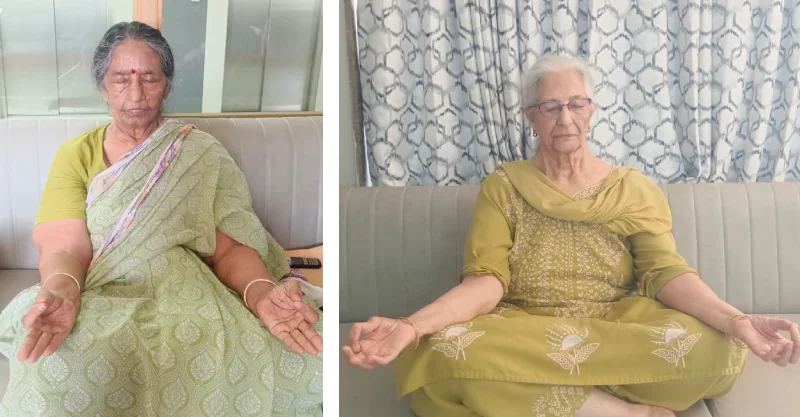Palliative care is specialised medical care aimed at providing relief from the symptoms and stress of serious illness. Its primary goal is to improve the quality of life for both the patient and their families. An increasingly popular and effective approach within palliative care services is the integration of mindfulness and meditation techniques. These practices offer numerous benefits, helping patients manage pain, reduce stress, and enhance their overall well-being. In this blog post, we will explore various mindfulness and meditation techniques and their profound benefits in the context of palliative care.
What is Mindfulness and Meditation?
Mindfulness involves being fully present and engaged in the current moment, aware of one’s thoughts, feelings, and surroundings without judgment. It is about cultivating an active, open focus on the moment.
Meditation is a practice in which a person employs a technique, such as mindfulness or focusing the mind on a specific object, thought, or action, to train attention and awareness and reach a cognitively clear, emotionally peaceful, and stable state.
Techniques of Mindfulness and Meditation in Palliative Care
Breathing Exercises
- Deep Breathing: To relax the body and mind, take slow, deep breaths. This simple technique can help reduce anxiety and stress.
- 4-7-8 Breathing: Inhale for four seconds, hold for seven, and exhale for eight seconds. This technique promotes relaxation and helps manage pain.
Body Scan Meditation
- This method is mentally looking for tense spots on the body. Starting from the toes and moving up to the head, patients are guided to focus on each body part, promoting relaxation and awareness of physical sensations.
Guided Imagery
- This method uses visualisation to create a calm and peaceful environment in the mind. Patients imagine a serene place or a healing process, which can help distract from pain and discomfort.
Loving-Kindness Meditation (Metta)
- This technique involves having loving and caring thoughts towards oneself and others. It fosters compassion and emotional resilience, helping patients cope with their condition and maintain positive relationships.
Mindful Movement
- Gentle exercises such as yoga or tai chi can be adapted for patients in palliative care. These practices combine physical movement with mindfulness, improving flexibility, balance, and mental calmness.
Benefits of Mindfulness and Meditation in Palliative Care
Pain Management
- Mindfulness and meditation can affect one’s perception of pain. By focusing on the present moment and breathing techniques, patients can reduce the intensity of pain and its emotional impact. Studies have shown that these practices can lead to significant reductions in chronic pain and improve pain tolerance.
Stress and Anxiety Reduction
- Serious illness often brings significant stress and anxiety. Mindfulness practices help patients manage these feelings by promoting a state of relaxation and calm. Regular meditation has been shown to decrease levels of cortisol, the stress hormone, leading to improved mental health.
Enhanced Emotional Well-being
- Practices like loving-kindness meditation boost feelings of positivity and compassion, reducing feelings of depression and loneliness. This emotional support is crucial in palliative care, where patients often face emotional and existential challenges.
Improved Sleep Quality
- Sleep disturbances are common in palliative care patients. Mindfulness and meditation techniques help calm the mind, making it easier to fall asleep and stay asleep. Improved sleep contributes to better overall health and quality of life.
Better Coping Mechanisms
- Mindfulness teaches patients to observe their thoughts and feelings without becoming overwhelmed. This skill is invaluable for coping with the emotional and physical challenges of serious illness. It enhances self-control and resilience.
Enhanced Patient-Provider Relationships
- When patients engage in mindfulness and meditation, they often become more communicative and open. This can lead to stronger relationships with caregivers and healthcare providers, ensuring that patient’s needs and concerns are better understood and addressed.
Integrating Mindfulness and Meditation into Palliative Care
Implementing mindfulness and meditation in palliative care requires a tailored approach. Here are some steps for integration:
Assessment and Personalization
- Assess each patient’s needs, preferences, and limitations. Personalise mindfulness and meditation practices to suit individual capabilities and comfort levels.
Training and Support
- Provide training for healthcare providers in mindfulness and meditation techniques. This ensures that they can guide patients effectively and integrate these practices into the care plan.
Creating a Supportive Environment
- Create a calm and supportive environment conducive to mindfulness practices. This can include quiet spaces, comfortable seating, and access to guided meditation resources.
Regular Practice
- Encourage regular practice, even if it’s for a few minutes each day. Consistency is essential for experiencing the full benefits of mindfulness and meditation.
Conclusion
The integration of mindfulness and meditation into palliative care offers a holistic approach to managing the complex needs of patients with serious illnesses. These practices provide profound benefits, from pain and stress reduction to improved emotional well-being and sleep quality. By incorporating mindfulness and meditation, palliative care can become more compassionate, personalised, and effective, enhancing the quality of life for patients and their families.
















